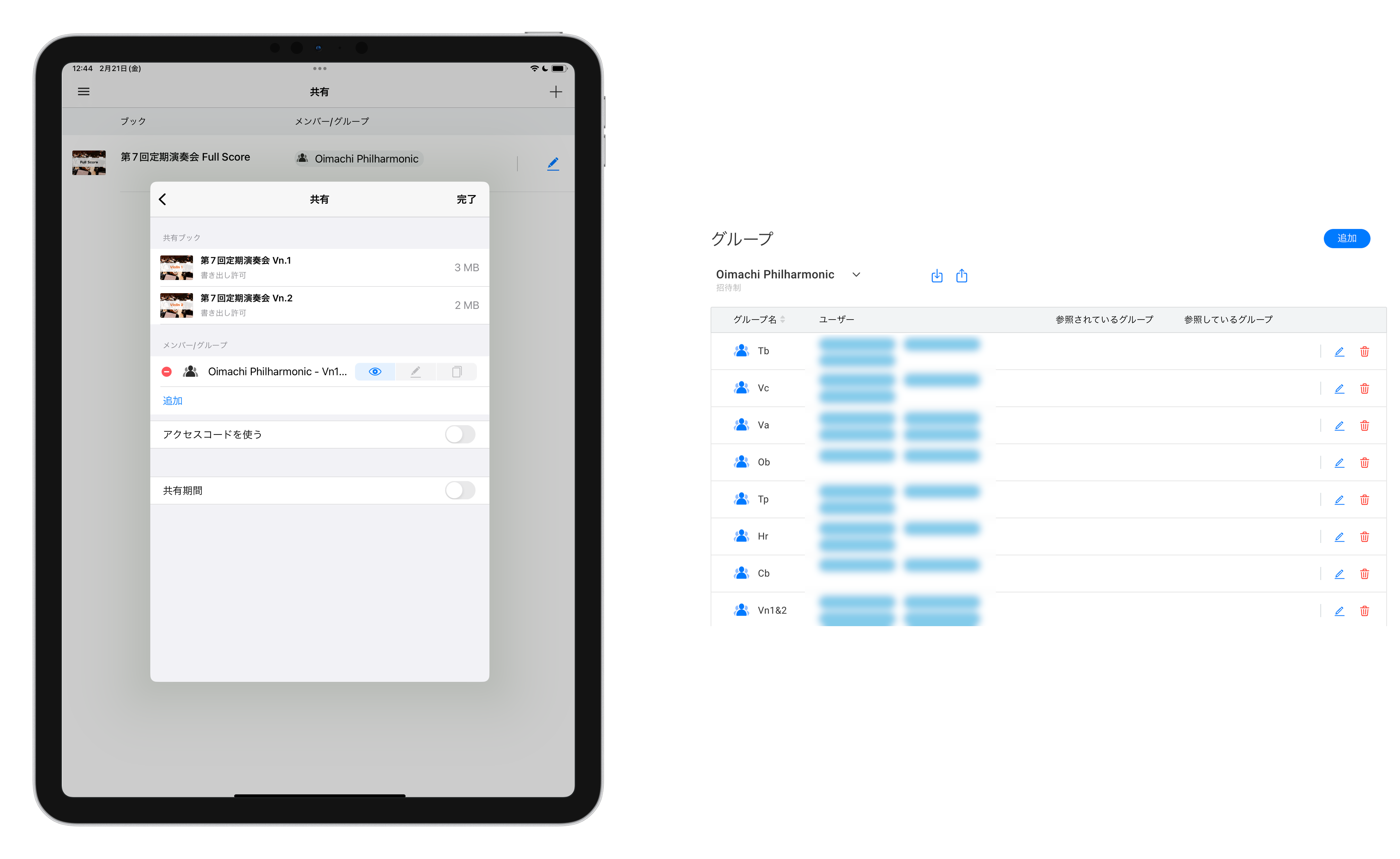If you belong to an amateur orchestra or chamber music group, you have to spend time and time printing and binding scores every time you start a new song. Also, if the practice area is underground and you can't connect to the internet, you may be in trouble because you can't access online scores. In particular, if you have multiple organizations, the management burden will increase even more.
The solution to such problems is Handbook X! Scores can be digitally managed, can also be used offline, and there are plenty of sharing and memo functions. Here are some useful features that are useful for music college students and professional musicians.
Introduction to how to use
With HandbookX, you can for example:
1. Eliminate the trouble of printing score. Safe even at underground practice areas with offline use
With HandbookX, you can save scores as PDFs and manage them on your tablet or smartphone. There is no need to bother printing, and you can smartly carry many volumes of sheet music. Furthermore, if you download it beforehand, you can browse it even in an offline environment. You can use it without problems even at the underground practice area.

2. Write notes on scores
You can write on sheet music using a tablet pen. Quickly fill in the conductor's instructions during practice and your own interpretations. Color coding improves visibility, and notes can be clearly checked even during busy performances.

3. Share scores with orchestra members
The appeal of Handbook X is that you can easily share scores with fellow performers. By creating a workgroup, part scores can also be shared smoothly. If the score has been corrected, it is also possible to share the score you have jotted down in Handbook X.

summary
By using HandbookX, everything from managing scores to writing memos and sharing with members can be operated with a single application, and information about performances can be smartly organized. It's an important thing that you use over and over again, so let's keep it clean and easy to see with Handbook X!




